Chris Baty's Blog, page 165
May 20, 2015
3 Movies that Taught Me to Value Humor in Fiction
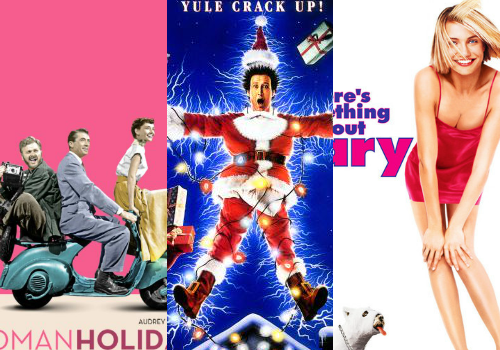
Inspiration can be everywhere: in music, in movies, in books… This month, we’re spotlighting inspiration in its many forms. Today, Leah Ferguson, author of the forthcoming All the Difference (Berkley/Penguin) , shares how coming to grips with her favorite films shaped the way she tells stories:
When I talk about my favorite stories on film, I want to say that I gravitate toward the wonderful movies of the 1950s: the travel, adventure and romance of films like Roman Holiday, Sabrina, or An Affair to Remember. But those movies are just the dreams in my head—driving to preschool pick-up in my minivan isn’t exactly the same as whipping a Vespa through Rome with Cary Grant by my side. It’s not… me.
I think that’s why I never turn away from the genre of Dumb Comedy. I love National Lampoon’s Christmas Vacation. Dumb and Dumber. There’s Something About Mary. (Do you think less of me now?)
And the juxtaposition of those two genres is like my writing life: I dream of crafting sweeping epics and future classics, but what comes out when I write is more everyday: the messy, the funny and all the crazy that happens in between. Maybe that’s why I gravitate toward the silly films. Maybe I just have the sense of humor of a 5th-grade boy. I don’t know. But unless I’m getting to wear a custom Givenchy gown to the market a la Audrey Hepburn, I’ve got to stick to real life. It’s a lot funnier, at the very least.

Leah Ferguson holds a B.A. from West Chester University, where she studied English Literature and Russian, and an M.A. in teaching from Notre Dame of Maryland University. A former editor and teacher, Leah now writes from her home in Pennsylvania with her husband, three young children, dog and tailless cat. Her debut novel,
All the Difference
, is coming September 1, 2015, from Berkley/Penguin and is available now for pre-order. Please connect with her on her blog, Tumblr, or through Facebook and Twitter.
May 18, 2015
3 Books that Helped Me Find Direction
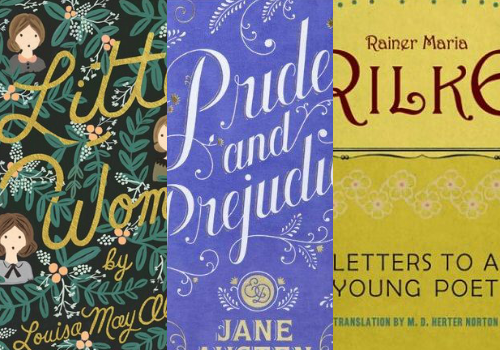
Inspiration can be everywhere: in music, in movies, in books… This month, we’re spotlighting inspiration in its many forms. Today,
Leah Ferguson, author of the forthcoming
All the Difference
(Berkley/Penguin)
, tells us about three books that shaped the woman she is today:
I have the rare—and really unfortunate—ability to forget the entire plot of a book immediately after I finish reading it (not the best attribute for a former English teacher, that’s for sure). But I can tell you that when I was younger, the character Jo in Little Women and Elizabeth in Pride and Prejudice shaped the woman I am today: spunky, not so good at taking orders, idealistic.
But it’s Ranier Marie Rilke’s Letters to a Young Poet that guided me through the confusing crossroads of my mid-twenties to get to the point where I could actually be a modern-day Jo or Elizabeth. His advice made me feel that my uncertainty was for a greater purpose, and that the awful period of loneliness and insecurity I was experiencing was necessary for me to find my direction—which I did as a new teacher, then a wife and mother, and finally as a writer.
As Rilke noted, “Art too is just a way of living, and however one lives, one can, without knowing, prepare for it.” I like to think that Louisa May Alcott and Jane Austen would agree.

Leah Ferguson holds a B.A. from West Chester University, where she studied English Literature and Russian, and an M.A. in teaching from Notre Dame of Maryland University. A former editor and teacher, Leah now writes from her home in Pennsylvania with her husband, three young children, dog and tailless cat. Her debut novel,
All the Difference
, is coming September 1, 2015, from Berkley/Penguin and is available now for pre-order. Please connect with her on her blog, Tumblr, or through Facebook and Twitter.
May 15, 2015
1 Movie that Taught Me How to Tell a Story
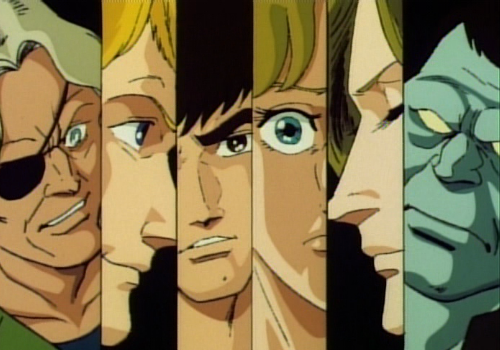
Inspiration can be everywhere: in music, in movies, in books… This month, we’re spotlighting inspiration in its many forms. Today, Tanya, nine-year Wrimo and author of White Noise , shares one movie that shaped her views on storytelling:
There was a movie I used to catch on Space on Sunday afternoons as a kid. Time Stranger would come on once every few weeks and I loved it. It’s about a woman in the future who is going to meet old colleagues when she gets into an accident, leading those colleagues to come together to save her life. It’s about a group of soldiers trapped in a small town in a desert that has decided that they must all die one by one. It’s about a little girl trying to survive poverty.
The movie was my first introduction to a lot of concepts: starting in medias res, multi-linear narratives, the slow reveal of information, and ambiguous endings. I’d seen them before, but it was the first time I really paid attention to them.
I learned how to limit perspective and to keep a tighter grip on some of the secrets of a story until it was appropriate to reveal them. I started exploring how to tell a story out of order. I paid a lot more attention to the things I didn’t have to say, and my stories became a lot more engaging because of it.

Tanya Lisle is the author of White Noise and The Looking Glass Saga, as well as a nine-year veteran of NaNoWriMo (Username: sheakoshan). When she isn’t writing, she’s working on websites, marathoning some show that everyone has already seen, or looking up adorable pictures of bunnies.
May 13, 2015
3 Things I Wish I’d Read Earlier

Inspiration can be everywhere: in music, in movies, in books… This month, we’re spotlighting inspiration in its many forms. Today, Tanya, nine-year Wrimo and author of White Noise, shares what stories she wishes she’d gotten to earlier:
I shouldn’t have avoided On Writing by Stephen King for as long as I did. The rest of his writing is hit-or-miss for me, but On Writing is a fantastic book that helped me figure out how writing worked as a process beyond the initial point of getting words on the page. It definitely helped shape my own writing process, and it would have been an enormous help if I’d gotten to it earlier.
Comics would have been great to get to earlier, too. Comics taught me more about narrative structure than most books did. On top of helping me get rid of my own stigma against indie works, they taught me a lot about tightening up a narrative, cutting out unnecessary elements, and pacing in general. Comics often appeal to very individual tastes, so I would recommend three:
The Sandman if you want something more literary, and like non-linear narratives, Transmetropolitan if you are in the mood for something a bit more political and vulgar, Pretty Deadly for the way in integrates myth and stories into its universe.On a more personal note, I wish I’d read Sword of Shannara at a younger age, because that ignited my love of genre fiction. It was also the book that made me immediately take up a pencil and paper to start writing my own story as soon as I put the book down.

Tanya Lisle is the author of White Noise and The Looking Glass Saga, as well as a nine-year veteran of NaNoWriMo (Username: sheakoshan). When she isn’t writing, she’s working on websites, marathoning some show that everyone has already seen, or looking up adorable pictures of bunnies.
May 11, 2015
3 Musicians to Set Your Book’s Pace
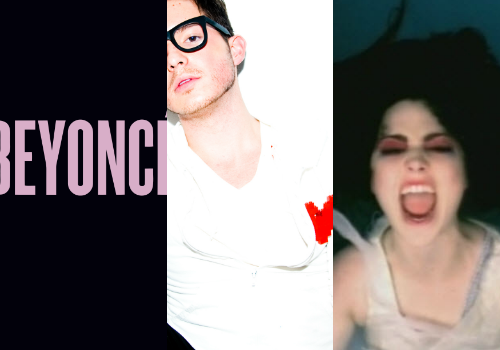
Inspiration can be everywhere: in music, in movies, in books… This month, we’re spotlighting inspiration in its many forms. Today, Tanya, nine-year Wrimo and author of White Noise, shares just what music sets the pace for her writing:
Everyone else I know can search for hours for the perfect song to write a scene to; I use the same playlist I listen to while I’m on the bus. I tend to stick to up-tempo songs with a strong beat, no matter what I’m writing. I prefer to just have my music set the pace for my fingers to write to.
Last goodbye between lovers where one is destined to die? Let’s try some Beyoncé.
Trapped in a room of still-beating hearts and having a panic attack? Simon Curtis should work for that.
Drowning? Actually, I think “Going Under” by Evanescence was playing for that, so it was sort of appropriate. …That would also explain why that scene was so melodramatic when I read it again for editing.
That’s actually most of the reason why writing to specific songs never works for me. Something about mood music kicks me into these long, melodramatic soliloquies that just don’t work for my prose.

Tanya Lisle is the author of White Noise and The Looking Glass Saga, as well as a nine-year veteran of NaNoWriMo (Username: sheakoshan). When she isn’t writing, she’s working on websites, marathoning some show that everyone has already seen, or looking up adorable pictures of bunnies.
May 8, 2015
Science Is Story: How Science and Storytelling Teach a Love for True Discovery
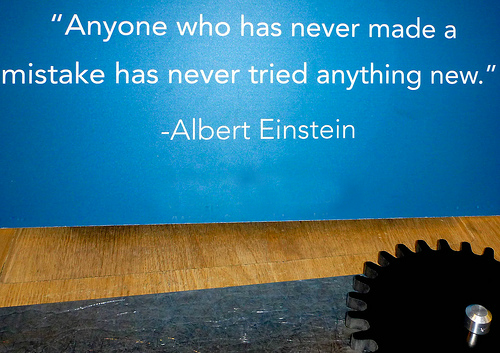
Stories can impact the future. No one knows that better than science fiction authors, and writer-scientists. As we celebrate our Interstellar Day of Science and Storytelling today, Friday, May 8, we’re talking the power of story in science . Today, Sara McBride, longtime Wrimo and biologist, shares how both science and storytelling teach us to embrace discovery:
Eureka discoveries in science, and brilliant spontaneous truths in improv are both born from living in the moment. It’s improvising dangerously to get not only yourself, but your partner in trouble. It’s attempting experiments that might break a well-known dogma. It’s pursuing a freedom that others might call risky and reckless. But this is the truth I’ve learned from improvising stories that I now apply to science: living in the moment isn’t risky and reckless, it’s brave, adventurous and leads to eureka moments—in stories and in science.
Our world is filled with rules. Don’t put your elbow on the table. (Try it in a fancy restaurant. It’s so liberating!) Don’t cut the tag off the pillow. (Are there pillow police? Does it upset the tooth fairy?) But to assume that a molecule reacts the same way in all situations is a dumb rule. To never block an offer in improv because it might hurt your partner’s feelings is a dumb rule. Rules are meant to be pushed, tested and broken.
Now let’s conduct a little experiment and live in the moment by reversing all those statements: To assume that a person reacts the same way in all situations is a dumb rule. To never block your scientific partner’s ideas because it might hurt their feelings can lead to planetary destruction—thus a dumb rule. (Honestly, how many times could Bruce Banner have prevented Tony Stark from inventing something horrible if he’d had the bravery to sit him down for a little “Let’s consider the consequences” chat?) In science and in stories, it’s best just to play the game, “What’s next?”
In long-form narrative improv, where we improvise entire two-hour plays, we must constantly adjust what the story is and where the conclusion will end up. It’s a great lesson for scientists. You can enter a research project with a cast of characters (molecules/proteins) and a few scene ideas (experiments) for the first act, but then watch what relationships form and follow them to the final conclusion.
Never enter a research project, or an improvised play, with a pre-set conclusion in your head. It’s a horrible way to improvise, and often results in deceitful science because the author chooses to listen to only half the data in order to satisfy his preconceived conclusion. Live in the moment. In stories and in science, the honest discoveries are the most satisfying. Follow the data as it presents itself and weave a new story never before conceived. If the scientist and the improviser live in the moment, then the potential for discovery is limitless.

Sara W. McBride holds a degree in theater from UCLA and a totally separate degree in molecular and cellular biology from SDSU. Sara recently published two of her favorite research projects: “Microbiota Modulate Behavioral and Physiological Abnormalities Associated with Neurodevelopmental Disorders” in the world’s top scientific journal, Cell, and “Traveling with a Gingerbread Man” in the beautifully designed travel magazine, Solo Travelist. Sara has been actively participating in NaNoWriMo since 2003, is the founder of LA’s Improv for Writers, and owns & operates Lemur Publishing, a fundraising publishing house focusing on NaNoWriMo authors. She can also be seen performing every Sunday evening with Impro Theater’s Los Angeles Theater Sports.
Top photo from Flickr user okeos.
May 6, 2015
Science Is Story: Science, Magic, and the Thin Line Between
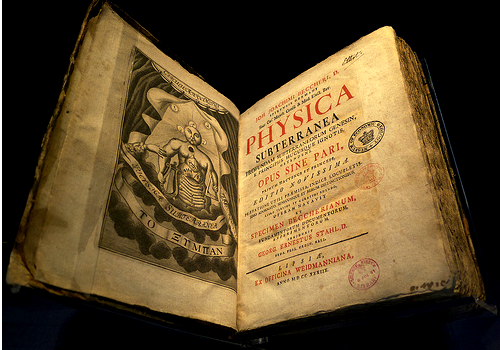
Stories can impact the future. No one knows that better than science fiction authors, and writer-scientists. All week, leading up to our Interstellar Day of Science and Storytelling on Friday, May 8, we’re talking the power of story in science . Today, Dr. Anthony Francis, longtime Wrimo and computer scientist, shares why the line between magic and science is thinner than you’d think:
I write stories about magic: a magical tattoo artist who can bring her tattoos to life, a teenage girl who can change into a tiger, and fire magic based on mystic fuel distilled from the blood of dragons. At first blush, this seems as far from science as you can get—but I was trained as a scientist, and I can’t stop thinking that if magic was real, then magic would be real. Unless you’re writing fairy tales, magic should have real effects on the real world.
There’s no good scientific explanation of how a teenage girl could change into a tiger—but that doesn’t stop us from asking scientific questions. When can she change? How fast can she change? How much will she weigh? And if your teenage daughter changes into a tiger in the back seat of your Prius, will the car’s shocks take it? And that gives us a clue to the scientific method: a good scientist not only asks questions, they ask how the answers will interact with what they already know.
Science has made some amazing discoveries. When I tried to hypothesize where dragons might have come from, I learned about the Hadean Era—that time in Earth’s history where rock fell like rain and the oceans were made of lava. We discovered a scientific picture of that era from a sequence of simple steps: a geologist walking in a field, picking up a rock, making a note of a time and a place in a notebook—and then returning to the lab to figure out where that rock came from.
Often our first ideas are wrong, but by patiently fitting together what other geologists know about the Earth, and what astronomers know about the Moon, we can learn, for example, that an innocuous looking rock is actually a chunk of a meteorite that just might have been knocked off the surface of Mars.
That’s why, in every book of my series, I have my main character, Dakota Frost make at least one mistake—some snap judgment, based on her first read of the situation, which she slowly corrects through the methods of science. She observes what’s happening around her closely, takes notes, shares them with others, tries to put the puzzle together, and, when the pieces don’t fit, changes her mind—then tests her new ideas against new evidence. And that’s perhaps the most important part of science: you need to be willing to stick your neck out, to try out your ideas in places where you don’t yet have all the pieces—and to change your mind if you’re wrong.
Many think magic is impossible. But what we can do with science once seemed impossible. And in the Dakota Frost stories, I use magic to show the progress of science accelerated into dramatic action—to show, for example, Dakota starting off in a book not believing in magic teleportation, slowly realizing that she’s wrong, perfecting a model of how it works—and then using that knowledge to step through a magic graffiti doorway and save the life of her impossible weretiger daughter.

Dr. Anthony G. Francis, Jr. is a science fiction writer and computer scientist who started writing urban fantasy because he likes it. When not making computers smarter or writing science fiction and fantasy, Anthony blogs about his life, his writing and his research at The Library of Dresan. He currently lives in San Jose with his wife and cats.
Top photo by Flickr user Ania Mendrek.
May 4, 2015
Science Is Story: Why We Need More Stories About Science
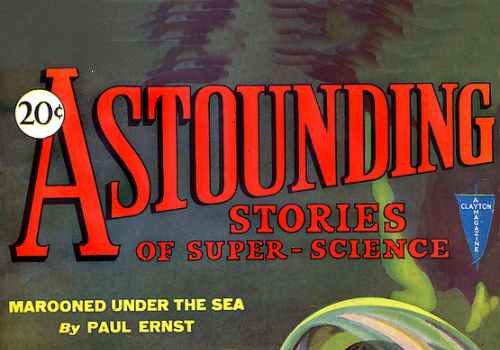
Stories can impact the future. No one knows that better than science fiction authors, and writer-scientists. All week, leading up to our Interstellar Day of Science and Storytelling on Friday, May 8, we’re talking the power of story with everyone from Star Trek writers to computer scientists. Today, Dr. Kathy Kitts, longtime Wrimo and geologist, shares why story needs to be even more crucial in science:
We’ve all seen the posters that list nifty inventions that first appeared in science fiction and later in our pockets. Scientists and engineers readily admit they take inspiration from the stories they’d read. Yet there is another very important contribution that story makes to science that we don’t talk about. Often, story communicates science concepts better than science itself does.
It’s not that scientists don’t know how to write (or can’t be taught), but rather a strong cultural bias exists against employing the tools of story in science. Somehow by using metaphor, we contaminate the data, dilute the message and undercut our credibility…
This bias is so pervasive many of my colleagues use pseudonyms for fear that writing fiction may reflect badly on their grant submissions. (If they make up stuff for stories, they might make up stuff in studies.) Yearly, at the Lunar and Planetary Science Conference, a secret cabal of SF writers convene late at night to discuss writing. We joke that if we’re found out, we’re going to lie and say we smoke crack, have illicit sex, and siphon off grant funds to head to the casino. Society will forgive sex, drugs and gambling. There’s always rehab. But fiction! No.
As humans learn best by metaphor, science is hard to understand because we’ve cut the best tool from the curriculum. Let me demonstrate the power of story in communicating hard science:
Recently, oil and gas interests have been sweet-talking my neighbors to allow drilling. We had a meet-and-greet with an industry rep at the local library. I arrived armed with drill core data and geologic maps to show what a colossally bad idea this was. The rep showed up with key chains and a story.
He described how the money would bring prosperity to the area, how our children could go to college and how we could save for our retirement. I looked at my maps and realized that if I went straight data, I’d lose to Mr. Keychain.
So I said, “Hi. I’m Kathy, the motherfracker.” After the laughing died down, I explained as a geologist it was my job to teach my students how to frack. I taught my students what to pump into the ground and what would happen to the environment as a result. I attended the meeting not as a geologist, but a citizen desperate to save my land and water. I spread out the maps so people could see the actual data, but I’d taken the day with story.
If society doesn’t allow scientists to mix metaphor and data, then it is up to us as writers to take on the role of communicator. I encourage you to get involved in activities such as the Interstellar Day of Science and Storytelling, supported by NaNoWriMo and the Chabot Space & Science Center, and help out the science folk by writing about real science concepts in your fiction. Use the tools of story and connect to the part of us that loves to sit around the fire and swap tales of adventure and love. Your story might just save the planet.

Dr. Kathy Kitts, a twelve time NaNoWriMo winner, hails from the desert southwest. She is a retired geology professor who served as a team member on the NASA Discovery Mission Genesis. Despite having written dozens of scientific papers, school curricula and textbooks, she no longer writes about what is, but rather what if. Her recent fiction adventures include short literary fiction and speculative fiction in the Storyteller’s Anthology, James Gunn’s Ad Astra, and Mad Scientist Journal.
Top photo by Flickr user x-ray delta one.
April 30, 2015
Camp Pep: Choose to Be Your Biggest Fan

It’s the final day of Camp NaNoWriMo’s April session. Our incredible participants have words of wisdom to share with their fellow writers. Today, Carissa asks you to take stock of how much you’ve accomplished:
Dear Camper,
I once read that “comparison is the thief of joy.” I cannot imagine an expression more apt for any NaNoWriMo event, including Camp.
Camp NaNoWriMo is a challenge, not a competition. This month is not about what others can accomplish, it’s always been about what you can accomplish. The NaNo community is a great place for support and camaraderie, but you have to be careful not to allow the pace and achievements of others to undermine your own creative process. The beauty of Camp lies in the freedom to tailor a month to fit your personal goals. Honor your need to create, and value the ways you’ve chosen to fulfill that need. Your process and your end product is unique to you and incomparable to anyone else.
Camp NaNo is also about giving yourself permission to be reckless. Throw traditional expectations regarding the written word out the window. Defy conventions. Forego the instinct to enslave yourself to grammatical rules. If editing, don’t kill your darlings (if you don’t want to). Forego proper grammar. Use adverbs.
Every time you focus on the rules that supposedly govern the writing process, you risk falling prey to self-doubt. And self-doubt will not only weaken your belief that you can accomplish your goal, it can destroy your desire to even try.
So be kind to yourself. You are giving birth to something that no one has ever seen before (even if they say they have). The creation of anything—not just a novel or a screenplay or a short story—is going to be messy and painful. Rather than berating yourself for not writing (or editing) the “right way,”, or for missing out on your word-count goal, why not pat yourself on the back for having the courage to write anything at all?
Today, choose to be your biggest fan—as opposed to your loudest critic. Your participation alone is remarkable. And I, for one, am proud to be participating with you. You’ve got this in the bag!
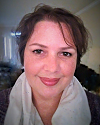
Carissa Picard is a mom, animal lover, and attorney. Until recently, her writing was limited to legal pleadings and contracts. NaNoWriMo rekindled a long-lost love of creative writing. Now she is trying to find her voice as a writer, and hoarding plot bunnies. Her young sons are secretly hoping she will be the next J.K. Rowling who will move them to a large castle in the English countryside (because castles are awesome). She can be found on Twitter: @mscpicard
Top photo by Flickr user .reid.
April 27, 2015
Camp Pep: You Can Climb This Mountain
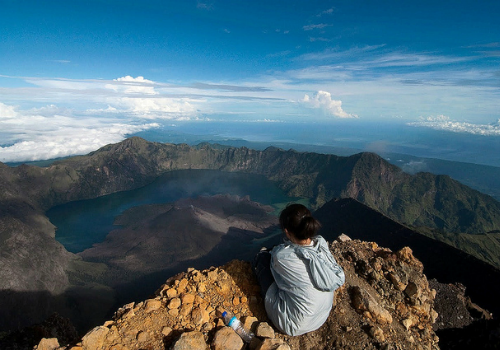
Are you tackling a writing project this April at Camp NaNoWriMo? Our incredible participants have words of wisdom to share with their fellow writers. Today, Natalya tells you just how to reach the mountain top:
Writing is like climbing a mountain.
No, it really is. First of all, you have to decide to take that first step and actually begin to climb the mountain. Your peers will try to talk you out of it: “No, you’re too busy/old/young/unqualified/etc.” You must ignore their words and begin preparing.
Some of us prefer to pack everything that we might need in case of a sudden emergency. I am one of those people. Others like to wing it and see where the journey takes them. Others strike a happy medium.
Once you’ve begun your climb up the mountain, you don’t want to stop. The view is beautiful. You’re not tired at all because with every step, you’re thinking, “This isn’t hard at all. Why would people talk me out of this?”
Then, you reach your first obstacle.
This can be anything from a stubborn character to a narrow path with a steep drop off. Doubt begins to creep into your mind, but you forge ahead, determined to finish what you’ve started.
Now, you’re halfway up that mountain. You breathe a sigh of relief. Many people are lounging around, but be careful! Do not fall into that trap! You must continue on.
A little past the halfway point, your mind is working on overdrive. The sun is beginning to go down. “I should’ve stopped,” you might think. “I can’t keep going! Why did I ever decide to do this in the first place?” If you allow these thoughts to take ahold of you, you will never finish climbing. Acknowledge them and then continue on.
You’re three-quarters of the way there now! The end is in sight, but you’re exhausted. Every shadow seems like a rabid bear. Every time you stop, it’s extremely hard for you to resume. Your footsteps grow slower and slower.
If you reach this point, think of all you’ve accomplished so far. You can’t give up now! You’re almost there!
And then, the beloved ending comes. As you cross the finish line, a great sadness comes over you, but it is quickly replaced by excitement. You did it! You made it to the top of the mountain! There were many highs, and many lows in your journey, but you continued through thick and thin and eventually made it to your goal.
What now? Well, you deserve a long rest… until July! Don’t stop now. You’re so close to reaching that peak.
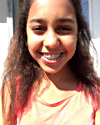
Natalya is a thirteen-year-old who lives in the Pacific Northwest and enjoys reading, writing, drawing, acting, dancing, singing, and making YouTube videos in her spare time.
Top photo by Flickr user Trekking Rinjani.
Chris Baty's Blog
- Chris Baty's profile
- 63 followers



